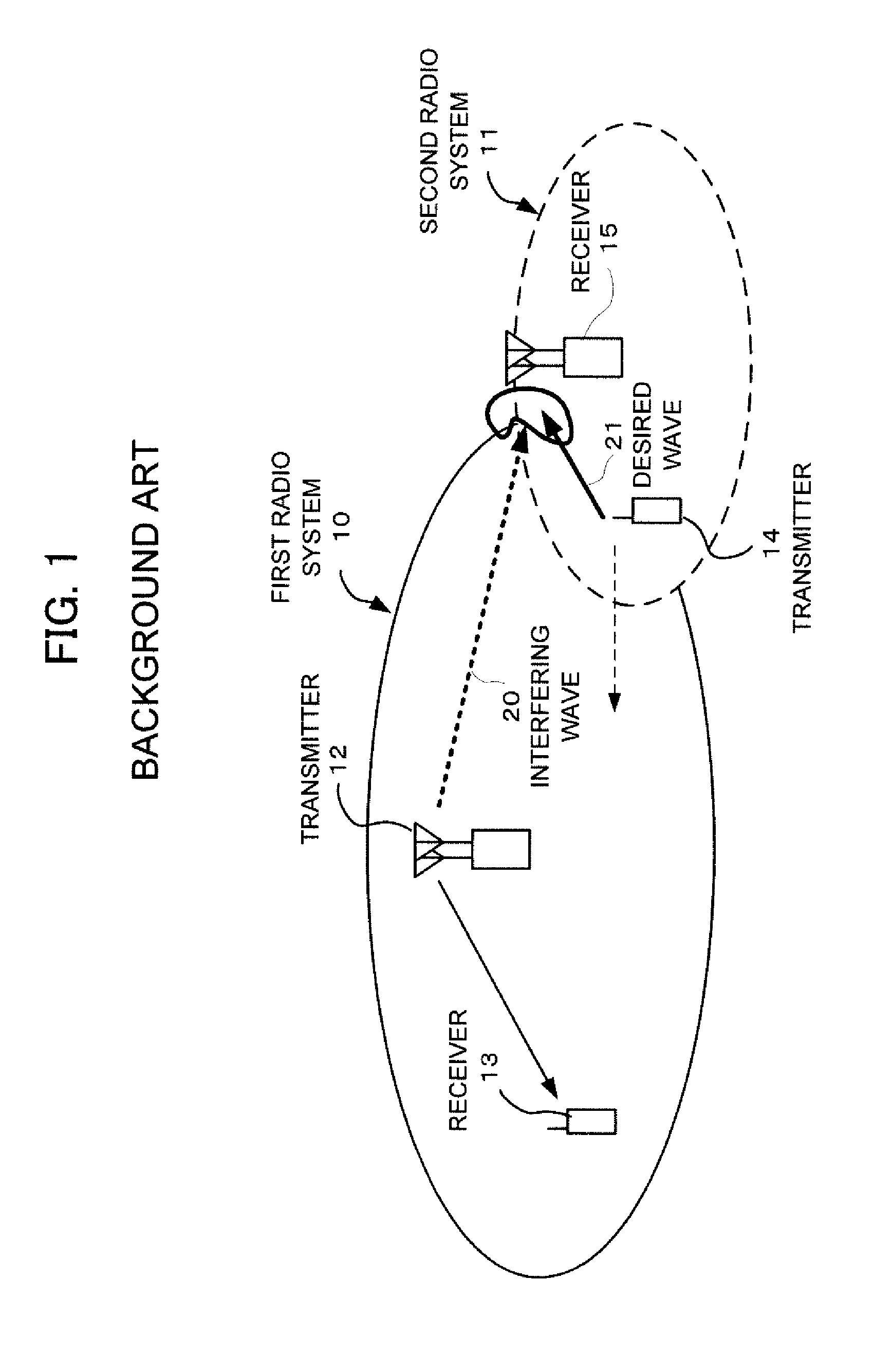Radio reception device and radio reception method in radio communication system
a radio communication system and radio reception technology, applied in the field of radio communication system, can solve problems such as exhaustion of frequency resources, and achieve the effect of effectively suppressing the influence of interference waves and enhancing interference suppression performan
- Summary
- Abstract
- Description
- Claims
- Application Information
AI Technical Summary
Benefits of technology
Problems solved by technology
Method used
Image
Examples
first exemplary embodiment
1. First Exemplary Embodiment
[0030]Hereinafter, a first exemplary embodiment of the present invention will be described in detail with reference to drawings. Single-carrier and multi-carrier transmission systems will be illustrated as an example of radio access schemes, and it will be assumed that the radio reception device of the second radio system 11 in FIG. 1 shares a frequency band assigned to the first radio system 10. The first radio system 10 and the second radio system 11 in FIG. 1 have different communication parameters, and here demodulation parameters (center frequency, sampling rate, and system bandwidth) are assumed to be different. Note that the radio reception device of the second radio system 11 is also applicable to a reception section of any of a mobile station and a base station in the second radio system 11 in FIG. 1.
1.1) Configuration
[0031]Referring to FIG. 2, the radio reception device according to the first exemplary embodiment of the present invention includ...
second exemplary embodiment
2. Second Exemplary Embodiment
[0063]Hereinafter, a second exemplary embodiment of the present invention will be described in detail with reference to drawings. However, it is assumed that the radio reception device of the second radio system in FIG. 1 shares a frequency band assigned to the first radio system 10. The radio reception device according to the second exemplary embodiment of the present invention obtains channel estimates and performs equalization processing through processing in frequency domain, assuming an OFDM (Orthogonal Frequency Division Multiplexing) based transmission scheme. The first radio system 10 and the second radio system 11 in FIG. 1 have different communication parameters, and here demodulation parameters (center frequency, subcarrier intervals, and system bandwidth) are assumed to be different. Note that the radio reception device of the second radio system 11 is also applicable to a reception section of any of a mobile station and a base station in th...
third exemplary embodiment
3. Third Exemplary Embodiment
[0087]The above-described exemplary embodiments illustrate radio reception devices in the first radio system 10 and the second radio system 11 shown in FIG. 1 as examples. However, the present invention is also applicable even if a plurality of radio systems of different types exist and a plurality of radio systems of the same type also exist. Hereinafter, a description will be given of a case, as a third exemplary embodiment of the present invention, where two radio systems of the same type (first and second radio systems) and two radio systems of different types (third and fourth radio systems) exist, and where a radio reception device according to the present exemplary embodiment belongs to the second radio system.
[0088]Referring to FIG. 11, the radio reception device according to the present exemplary embodiment includes a frequency oscillator 1001, frequency conversion sections 1002a and 1002b, AD conversion sections 1003a and 1003b, sampling rate c...
PUM
 Login to View More
Login to View More Abstract
Description
Claims
Application Information
 Login to View More
Login to View More - R&D
- Intellectual Property
- Life Sciences
- Materials
- Tech Scout
- Unparalleled Data Quality
- Higher Quality Content
- 60% Fewer Hallucinations
Browse by: Latest US Patents, China's latest patents, Technical Efficacy Thesaurus, Application Domain, Technology Topic, Popular Technical Reports.
© 2025 PatSnap. All rights reserved.Legal|Privacy policy|Modern Slavery Act Transparency Statement|Sitemap|About US| Contact US: help@patsnap.com



